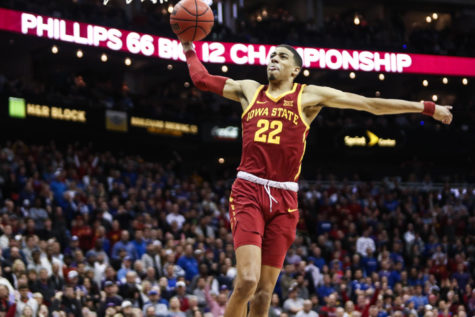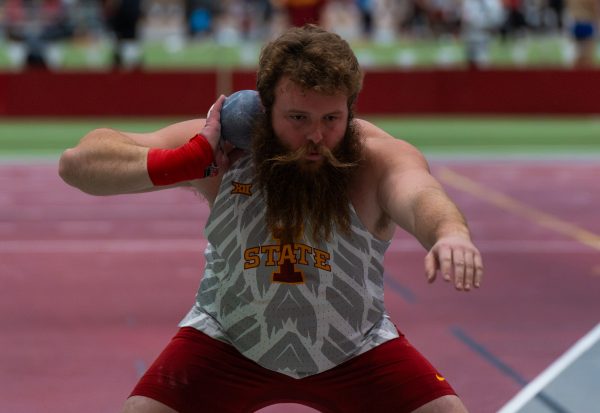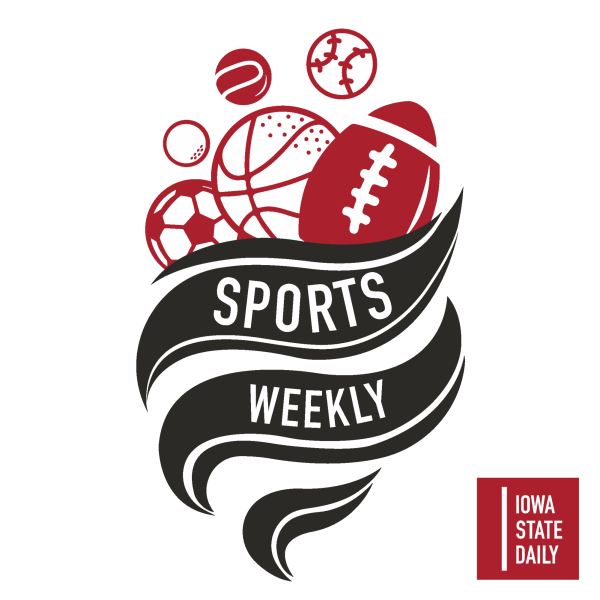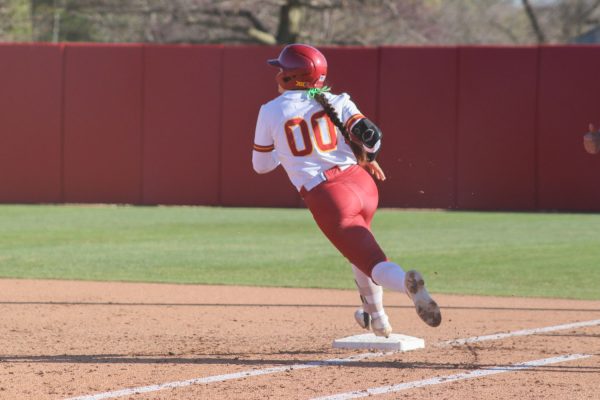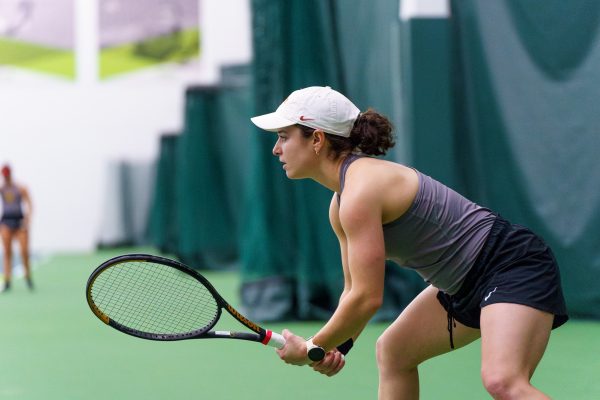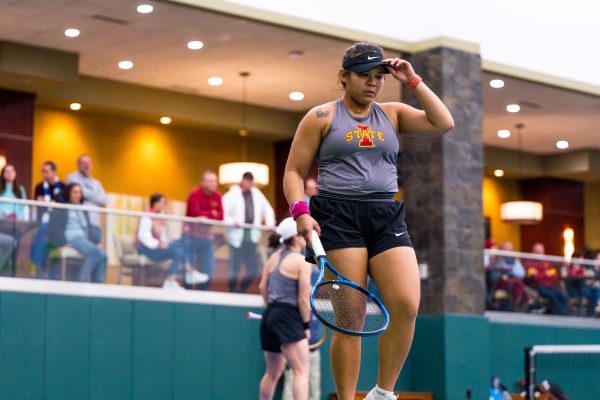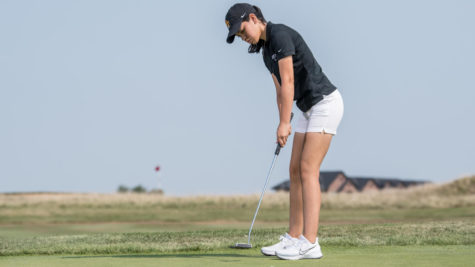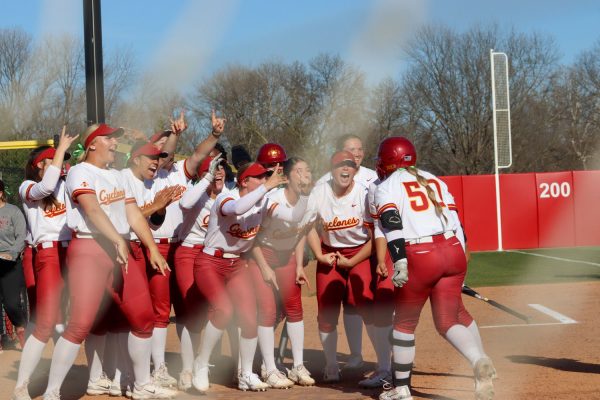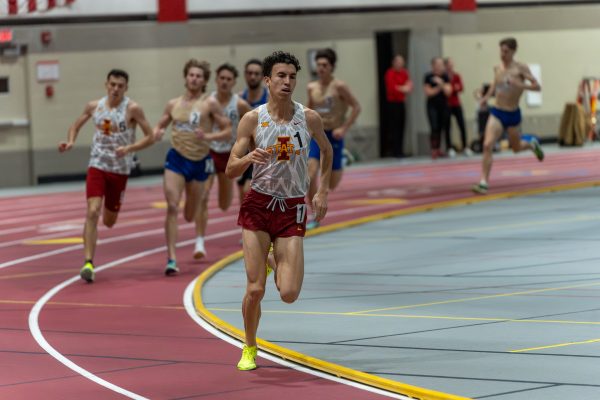CLUBS: Boxing club offers competition and workouts
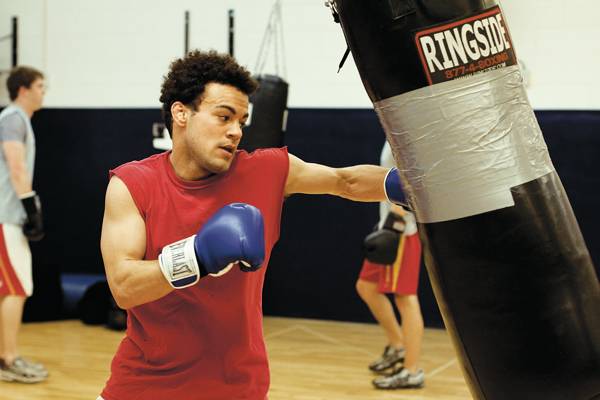
Sol Hughes, a senior in psychology, works on his punches in Monday’s ISU Boxing Club practice at Beyer 301. Boxing practices are open to all ISU students with a 2.5 GPA or higher and are currently held in Beyer due to the renovations of State Gym. Photo: Rebekka Brown/Iowa State Daily
March 9, 2010
To most people, the idea of standing toe to toe with someone and trading punches borders on insanity. But the guys and girls in the ISU Boxing Club live for it.
The rush of adrenaline a boxer gets right before they enter the ring is unlike any other.
“The anxiety you feel before your first fight is unreal,” said Joe Copley, a junior in architecture and the boxing club president. “Before my first fight I couldn’t even finish my meal.”
The boxers in the ISU boxing club — which at the moment numbers around 30 — don’t have a lot of experience at the moment. Dealing with that anxiety, and being able to overcome it in the ring is something that can’t really be taught.
“No one ever wants to lose, but there’s a lot of humility in boxing,” said Chad Harms, the faculty advisor and coach for boxing. “But win or lose, you develop a whole new level of confidence just by getting in the ring.”
Copley echoed his statements, saying every worry sort of vanished once the bell rang for the first round.
“Once that bell rings you’re just thinking about the guy standing in front of you that wants to knock your head off,” Copley said.
The coaches do what they can to prepare the boxers, and if there were any coaches better suited to teach them, good luck finding them. Harms came on to coach and advise a few years ago, and coaches alongside the father of the modern ISU boxing club, Terry Dowd.
Dowd has been at Iowa State for 37 years, and hopes to stick around for three more before officially retiring. He’s coached 17 national champions, including Harms, who won in 1994.
Before coaching at Iowa State, Dowd was an accomplished boxer himself, going 36-2 over his years boxing in the military.
“I only lost twice,” Dowd said. “The one time I was disqualified because I hit the guy while he was staggering around. The other one, I’d played football the night before, and I just wasn’t feeling it.”
Dowd was an airborne sniper in the service, and served three tours in Vietnam.
“That’s scary stuff,” Dowd said. “I got shot across the spine, too.”
But what Dowd is most proud of is his impact at Iowa State. He and his wife have been a staple at Iowa State, and have influenced a vast amount of students.
“I’ve coached anywhere from 1,500 to 2,000 kids in my 37 years here,” Dowd said. “But my biggest thing is that every one of them has graduated. If you aren’t serious about your education, you might as well not even bother with us.”
The boxing club requires any student who wants to join the club have a minimum 2.5 GPA. To compete at tournaments, boxers must have a 3.0 GPA.
“These kids are students first,” Harms said. “They know how serious we are about it, and we don’t really ever have any problems.”
The majority of club members aren’t in it to fight competitively. Harms said that nearly 80 percent are there simply to get the workout, hit the bag, and maybe occasionally spar.
“I think that’s a big misconception,” Copley said. “You don’t have to fight if you join. You can just come and work out with us.”
Those that do fight in tournaments and spend the season preparing for the regional and national tournaments do so under the rule book of the National Collegiate Boxing Association. The NCBA has three regions — East, Midwest and West. Iowa State is in the Midwest region, but because of the location of the other schools in the region, it’s extremely difficult to attend NCBA tournaments.
“The closest region opponent is the University of Kentucky,” Harms said. “So we usually don’t get a chance to do NCBA tournaments until regionals.”
Each of the regions include one of the military academies, which according to Harms, have always had the most accomplished and experience collegiate boxers.
“The guys we take to regionals might have one or two fights,” Harms said. “But they might be going up against a kid from the Naval academy with 12.”
To supplement the lack of NCBA tournaments, the boxers fight at local shows in Iowa, and sometimes take part in Iowa Golden Gloves.
“Outside of college events, the kids are allowed 10 fights,” Harms said. “Any more and you aren’t eligible for regionals.”
Right now Harms only has one boxer preparing for regionals. Nick Mann, a junior in construction engineering, has two fights under his belt, and Harms thinks he’s ready.
“He’s got the right mindset,” Harms said. “He’ll definitely be ready.”
Mann got into boxing after watching his dad and grandfather as a kid.
“I wasn’t going to make the football team, so I figured, ‘Why not?’” Mann said with a laugh. “But seriously, I heard the stories and wanted to give it a shot myself.”
Regionals are March 19 and 20 in Morgantown, W. Va and under the NCBA rules, the fights consist of three two-minute rounds. In the interest of safety, there are no knockouts, rather the referee will stop the fight before things go too far.
“The NCAA ended boxing after a kid died after a fight in 1960,” Harms said. “So when the NCBA started in the mid-70s they took a huge interest in safety for obvious reasons.”
The boxers each have to wear headgear during fights, and have 12-ounce gloves, which are heavier than what most wear.
To join the club, you simply have to show up to a workout at Beyer 301, and pay $50 dues for the semester.
“You need handwraps and a mouth piece,” Harms said. “But other than that, you don’t need to be experienced or anything. Just show up and being willing to work at it.”
So until the night of his fight at regionals, Mann will continue to work hard under the direction of Harms and Dowd. He can’t wait just to get in the ring and let everything else melt away.
“Once I’m in that ring, everything else disappears,” Mann said. “When the bell rings, I’ll be ready to go.”






